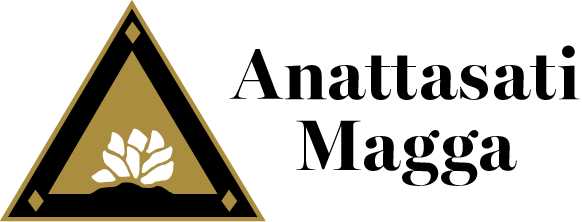What does Anattasati Magga mean?
Our Sangha name is created from three Pali words:
- Anatta means “no self”
- Sati means “mindfulness”
- Magga means “path”
So we are a Path of Mindfulness of No Self.
Do you worship Gotama Buddha or any other Teachers of Buddhism?
We Buddhists are deeply respectful and grateful to all Buddhists who have taught us the way to the happiness and contentment of waking up. Gautama Buddha was not a God and Buddhists do not worship him.
Our practices are in accordance with the teachings of Gautama Buddha and other Buddhist teachers who followed him. When we sit silently in the meditation hall, we are meditating—using techniques to focus and concentrate our mind so that habitual thinking does not grab our attention. In working meditation, we practice bringing the focused mind of meditation into whatever activity we are doing. When washing dishes, there’s just washing dishes…
What Buddhist lineage does this Sangha follow?
We follow the Soto Zen lineage as taught through Shasta Abbey, having received their permission to use some of their services, music, and the wording of the Precepts. We also adhere to practices taught through Vichara Bodhiyana Monastery, where our Teacher first trained under the guidance of Vichara Roshi Jay Dupont.
Why do you bow so much?
We bow rather than talking to keep the meditation environment quiet and undisturbed. The bow—called a gassho—can mean hello, goodbye, I understand, thank you, yes, I will, and more. Additionally, we bow throughout our meditation periods, our services, and when moving about the meditation hall to practice being mindful. Bowing is another way to show respect—both to people and to places.
Why do some of your members wear black jackets and purple stoles?
As some people train in Buddhism, they realize they want a Teacher to rely upon. The Teacher keeps an eye on that person’s awakening, providing specific, deeper guidance to him or her as a practice. In our Sangha, students who have taken this step wear the jacket and stole.
Why do you wear a mala?
The mala worn in our Sangha is keyed to the Daily Recitation, a recitation that contains all the basic teachings of Gotama Buddha. This recitation is part of our short morning service and our full morning service, and it recommits us to our practice and to using the Precepts as guides for our practice.
People who attend our Precepts Class and then participate in the Taking of the Precepts Ceremony are given a mala, which they then wear to our services, classes, and retreats.
What is Dokusan? Can anyone participate?
Dokusan is individually scheduled time with the Teacher, in which a person brings inquiry about his/her spiritual practice. Yes, anyone can participate by signing up. It is appropriate to offer Dana for Dokusan.
The Dana thing is confusing for me. Can you offer guidance about what and/or how much to offer?
For over 2600 years, the Dharma (Buddhist teachings) has been offered on a donation basis, in which those of us receiving the teachings give back from our hearts to the Sangha and the Teacher. Sometimes people give food or time or energy in exchange for the teachings. Most of the time, as we can, we give money, which in turn supports the Teacher who receives no salary for his/her roles in the Sangha.
Your first consideration might be, “How much value does this teaching and effort have for me?” and offer recompense in accord with your heart. Or consider what you make in an hour of your work. If you have just spent an hour at a meditation, a service, or a Dharma class, perhaps your own hourly rate could be your Dana guideline.
Or, ask what it costs to keep the Sangha doors open for an hour; then give that amount to the Sangha House, and another amount to the Teacher. In the priorities of your life, where does your spiritual practice fit, and how much time do you ask of the Sangha and of the Teacher? If you are committed to and spend 25% of your time and energy on your practice, then perhaps you could offer 25% of your resources back to your Sangha.
All the above are just guidelines—ways that could help you feel resolved in your contribution of Dana.
On my first visit, your members seemed so formal and not really too friendly. Can you speak to this?
We do look moderately formal, although what is really happening is that people are being very mindful of what they each are doing and not paying attention to or being distracted by what anyone else is doing. This can leave one feeling alone on one’s first visit. We sincerely trust that the Guest Master (also called the Bell Ringer) greeted you, asked if you needed any guidance in meditation, and helped you get seated in the meditation hall; and that after the Meditation and Service, the Guide thanked you specifically for joining us and invited you back.
How can I find out about the meditations and Dharma classes you offer?
Our website calendar presents our current Meditations, Services, and Dharma class schedules, and on-going training classes. It also has information on up-coming retreats and a sign-up calendar for Dokusan.
May I come to your Services or to Dokusan without needing to make any further commitment to Buddhism?
Of course!
